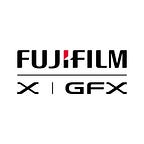Built for Storytelling
Find out why FUJIFILM GFX System cameras make the perfect tool for documentary photographers
Making documentary images is a unique style of photography that brings specific challenges and opportunities. But as wide as the subject matter is, from discreet wedding photography to frontline press reporting, the demands on the camera are very similar. A good documentary camera needs to be portable, responsive, sturdy, and durable, but also capable of delivering outstanding images in a quick and efficient way.
These features are often assumed to be the sole preserve of DSLRs and mirrorless bodies, but the GFX system has brought something new to the table. These cameras offer all the lightweight and handling benefits of DSLRs, but with the added bonus of higher image quality and the distinctive look of a larger format sensor. So, where once a larger format camera would have feared to tread, GFX now goes bravely.
Built for the Streets
In fact, whether a photographer is using GFX100S, GFX100, GFX 50S or the rangefinder-style GFX 50R, it would be difficult to tell without looking closely that they weren’t using a DSLR. GFX100S and GFX 50R are extremely portable, at only 5.90×4.09×3.42in/1.98lbs and 6.33×3.80×2.62in/27.3oz respectively, including battery and memory card. They also both have a grippy and strong magnesium-alloy body that’s dust- and water-resistant and freezeproof to 14°F. This makes them suitable for almost any documentary project you could imagine. And there’s extra security since all GFX cameras use dual card slots to keep images safe or extend recording time.
Seeing the Story
GFX 50R’s rangefinder styling is particularly helpful for documentary photographers. Inspired by similar designs from the medium format bodies that many photojournalists favored back in the days of film, and with the EVF pushed to the left edge of the body, photographers can keep their eye on the subject or their surroundings, increasing reaction time and safety. It also lets them plan frames more easily as they can see the subject before it enters the frame. It’s a vital ingredient in terms of safety when working in chaotic spaces, but it also helps show more of the photographer’s face to the subject when using the viewfinder, which can improve their connection with each other.
Moreover, time is always a factor with documentary photography. Photographers need to concentrate on getting unrepeatable moments right the first time. After all, photojournalists are unlikely to ask a protester if they could quickly replicate a passionate moment. Using an EVF, like those found in GFX system cameras, allows for increased security in exposures because it mirrors the view — therefore the exposure — of the picture. Consequently, photographers can bias the exposure for perfect frames in camera — they save time and avoid missing anything vital in their storytelling.
Responsive Control
A million miles from the clunky studio-bound larger format bodies of days past, GFX system cameras are responsive and highly customizable, too. They enjoy all the benefits of modern mirrorless cameras, such as touchscreen control, custom exposure settings, and a choice between a mechanical focal plane shutter or an electronic first curtain type, which allows shutter speeds of up to 1/16,000 sec. This makes for easy operation with even the fastest glass.
Masterful AF
Another huge benefit for documentary work is reliable and adaptable autofocus. Again, the GFX system brings user-friendly features directly into the hands of photographers, so they can make the most of each camera’s unrivaled image quality. For instance, they have all the AF modes and area settings you’d expect to find on a DSLR, and these can be quickly set and defined using, among other inputs, the dedicated Focus Lever.
GFX system cameras also benefit from advanced subject-tracking features, including Face Detection and Eye Detection AF. By automatically finding the subject’s features, even in typically challenging conditions like dark interiors or backlit situations, images are more likely to be successful, especially when covering busy and fast-moving environments, such as a workplace. In fact, photographers don’t even need to concentrate on the camera for it to pick up and follow the subject, so they can pay more attention to journalistic interactions and not be distracted by camera settings.
Ultimately, working faster and more reliably — with the camera doing lots of the heavy lifting — means it’s easier for documentary photographers to concentrate on their subject, keeping up a dialog and letting technology do its job, rather than get in the way.
Discretion When You Need It
Of course, there are many occasions when a documentary photographer wants to remain unseen. This could be because the environment is volatile, or simply because they want to get the truest sense of the moment possible, leaving subjects completely unaware of their presence.
GFX system cameras are set up to keep photographers completely in the background. The mechanical shutter can be dampened to make as little noise as possible and, if complete silence is needed, the electronic shutter comes into play, letting photographers work without any sound at all.
The GFX system’s 2.36M-dot tilting touchscreen also helps documentary photographers work in an anonymous way, simply by angling it outwards and composing from waist level or lower.
Learn more about GFX system here or contact your nearest FUJIFILM Authorized Dealer for more information.
Get more education, inspiration, and insight from the world of photography on the FUJIFILM Exposure Center.
